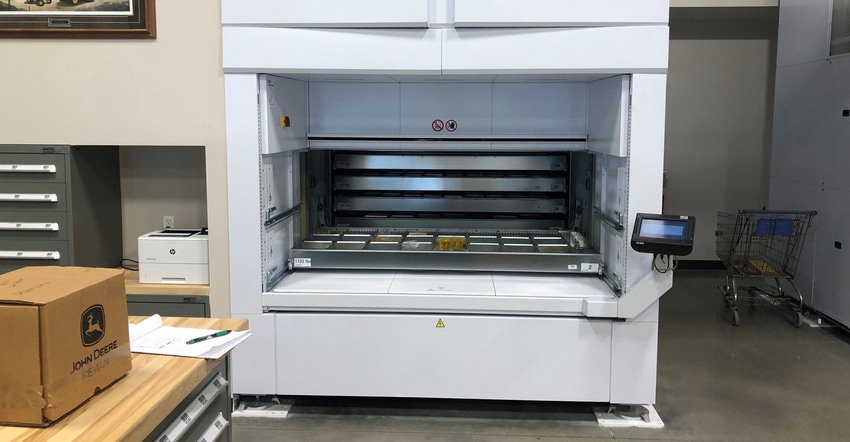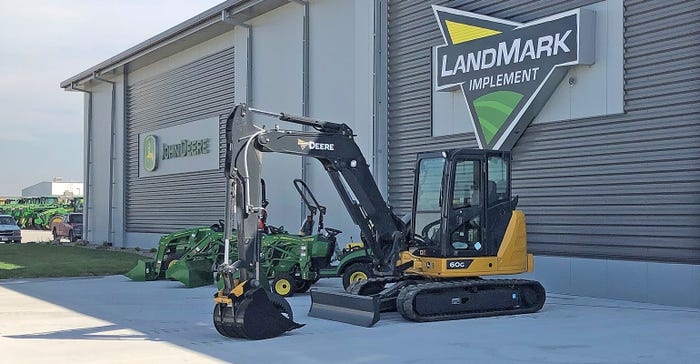
The customer in front of the parts counter checked his watch. He was in a hurry to get back on the road. He expected the parts person would disappear, go hunting for the part somewhere in the back, and finally come back with the item. Instead, the parts man stepped over to a small computer screen and keyboard, typed in numbers and letters, and then soon opened what looked like a tall cabinet in front of him. The part the customer wanted was on the tray inside. The whole process only took a few minutes.
That’s not science fiction. It happens every day at the new Landmark John Deere dealership near Hebron, Neb. Two identical stacks of cubes that resemble cabinets are built into the wall behind the parts counter. Each cube contains 10 trays, with 70 trays per stack. When the parts person types in a code, mechanization inside the cubes brings the tray with the correct part down where the parts person can easily retrieve it.
Related: How technology streamlines parts distribution
Parts within each tray are sorted and in baskets. For larger parts, it’s still necessary to store them in more traditional bins.

John Deere spokespersons say you can expect more dealers to adopt various technologies to make the parts buying process more efficient. Chad Passman, public and industry relations manager for North American agriculture, answers questions about trends in handling parts and repairs:
Are other dealers investing in these types of systems? Yes, dealers are leveraging similar tools to continue to efficiently support customers when and where they need it. In addition, dealers not only leverage these systems, but they also leverage each other. For example, as harvest makes its way north to south, dealers and Deere are learning what parts are needed and where they’re needed to keep customers running.
How can this benefit the farmer with better service? Dealers are able to better manage their inventories and improve speed and efficiencies to help their customers remain up and running in the field. Customers’ best protection for uptime during harvest is having their local John Deere dealer complete an inspection in the off-season on their machine and complete recommended repairs.
Can you provide a few general comments about advances in parts stocking and changes in practices? John Deere dealers are always innovating new ways to service customers. The use of analytical tools and systems helps dealers order and manage parts inventories more efficiently and effectively to ensure customers have the parts they need when they need them. Customer experience is highly correlated to John Deere dealers’ ability to provide parts. Many of our dealers take advantage of advanced algorithms that look forward to dealers’ stocking needs and place orders for those parts in advance of customer historical demand. Dealers also take advantage of large purchases from Deere to increase the depth of their stock to weather those weeks when everyone goes to the field.
About the Author(s)
You May Also Like




